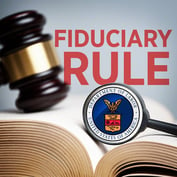(Bloomberg Businessweek) – Retirement security is ending the year on an all-time low. The $1.1 trillion last-minute spending bill will allow trustees to cut benefits in multi-employer defined benefit pension plans. And while it affects a relatively small population, 10 million people at most, it opens the door for other employers to make similar cuts.
Maybe that’s a long way off; maybe not. But the provision is a rude awakening: we may romanticize guaranteed retirement benefits and lament our 401(k) world, but pensions aren’t safe these days either.
Until recently, a pension benefit seemed as good as money in the bank. Companies or governments set aside money for employees’ retirements; they were on the hook for funding the promised benefits appropriately.
In recent years, it has become clear that most pension plans are falling short, but accrued benefits normally aren’t cut unless the plan, or employer, is on the verge of bankruptcy — high-profile examples include airline and steel companies. Public pension benefits appear even safer, because they are guaranteed by state constitutions.
By comparison, 401(k) and other defined contribution plans seem much less reliable. They require employees to decide, individually, to set aside money for retirement and then to invest it appropriately over the course of 30 or so years.
Research suggests that people are remarkably bad at both:about 20 percent of eligible employees don’t participate in their 401(k) plan. Those who do save too little and many choose investments that under-perform the market, charge high investment fees, or both.








 December 22, 2014 at 05:32 AM
December 22, 2014 at 05:32 AM










